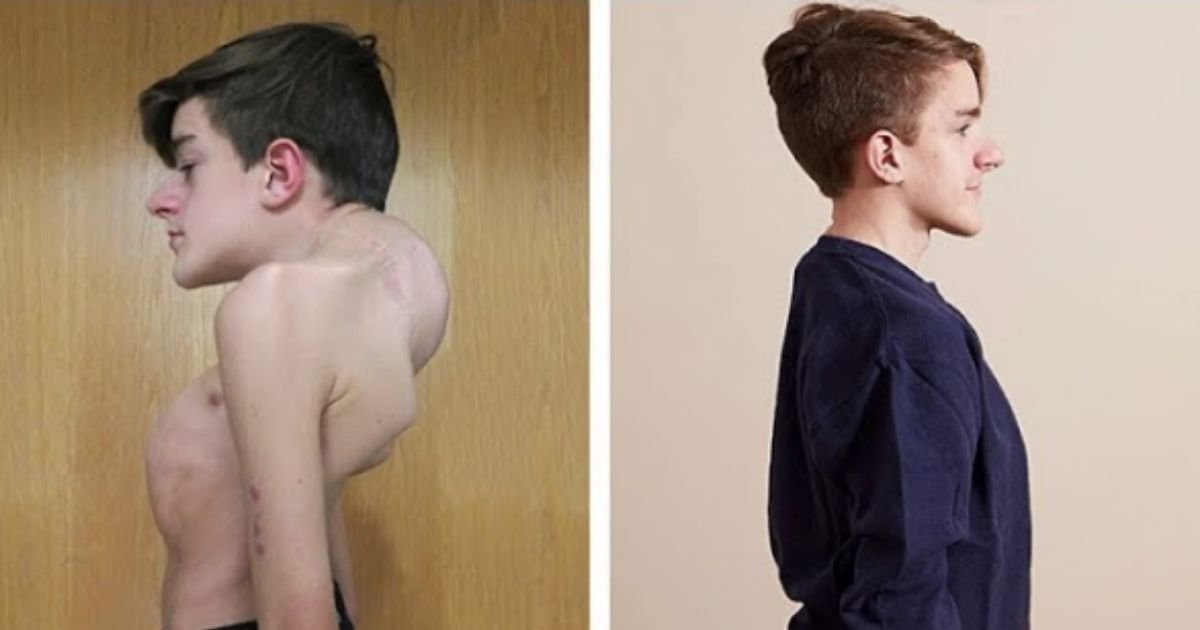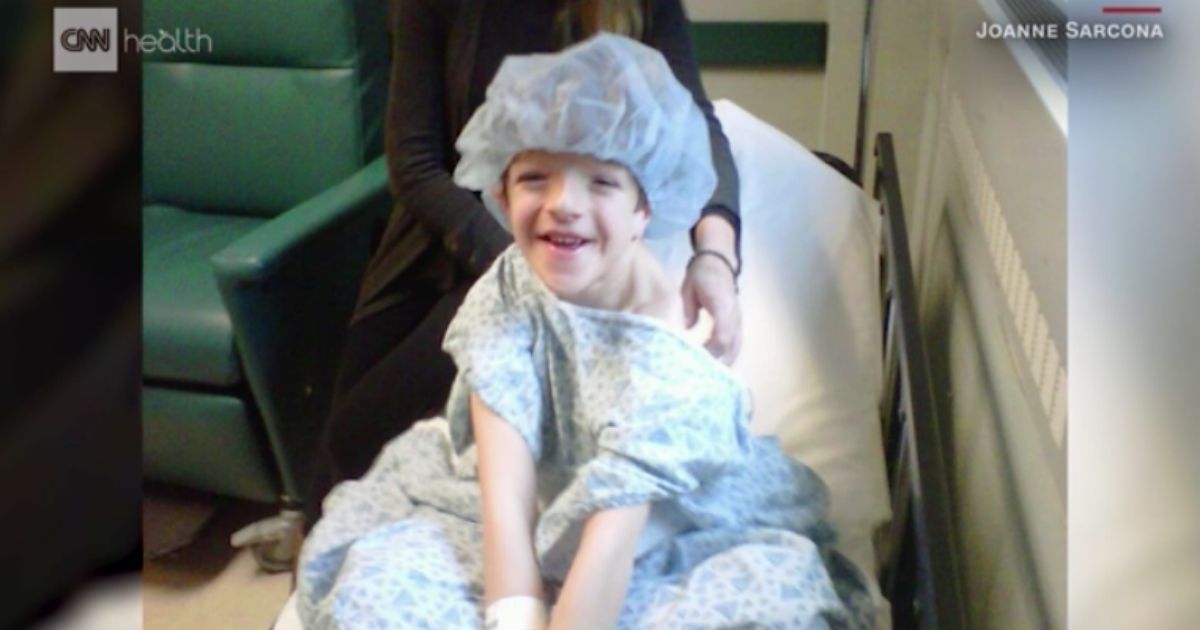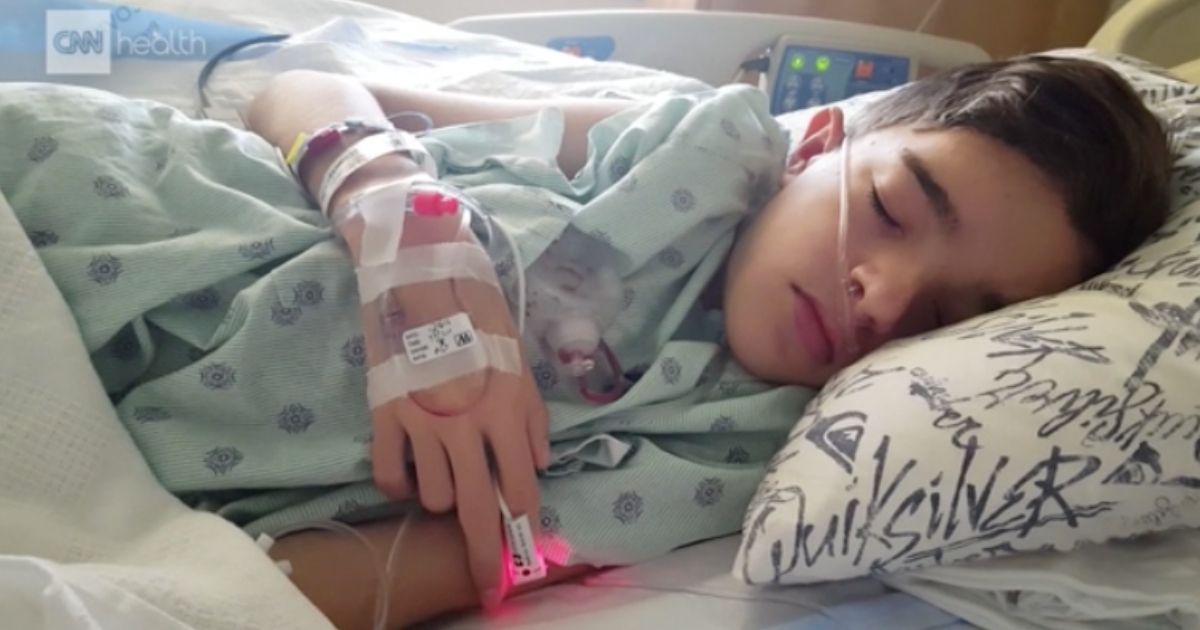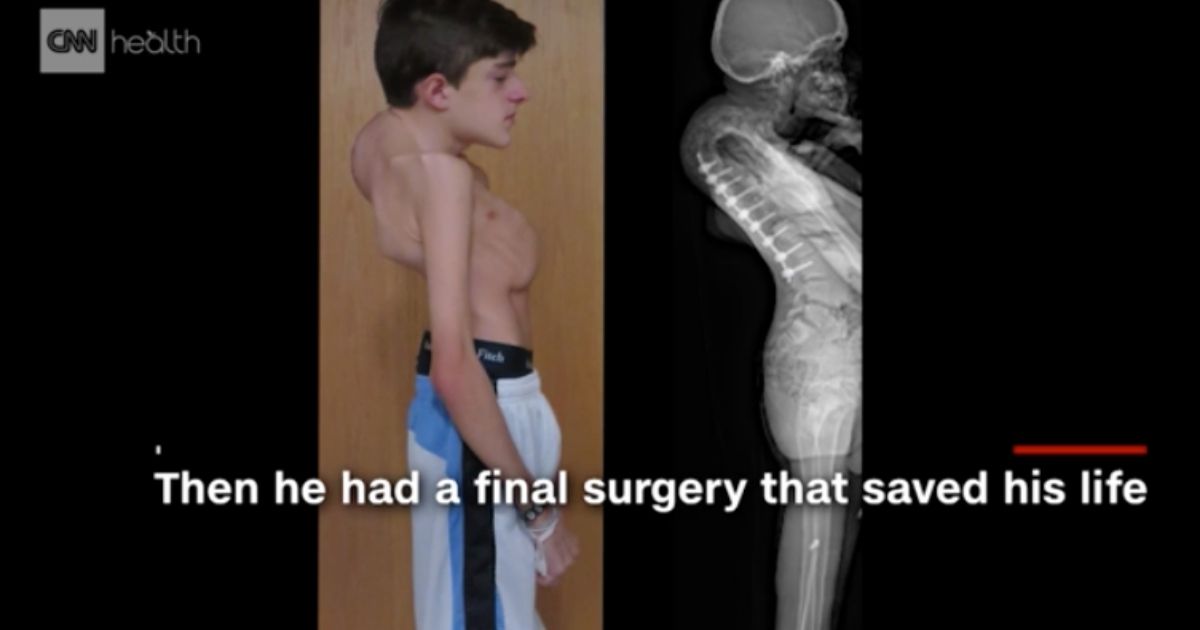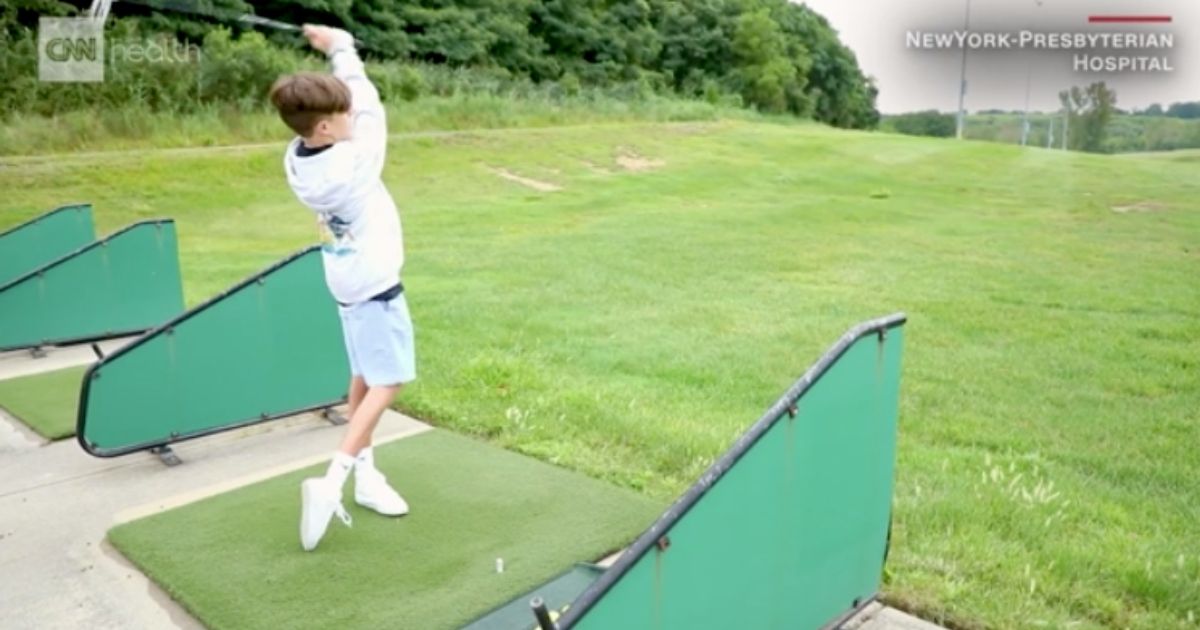John Sarcona, now 19, had been diagnosed at age 5 with an extreme case of scoliosis and kyphosis.
He’d already had 16 surgeries, with doctors placing metal implants along his spine to support his back as he grew.
John was in a baseball game when his mother, Joanne saw his t-shirt bloodied in the hamper. His bedding was bloody too, and she knew something had gone terribly wrong.
“I told myself that this can’t be happening,” Joanne said. “I’m putting two and two together, and I’m trying to get a hold of John. Nobody is answering my calls or texts, and I’m frantic, my mind is running.”
When his son finally came home after his mother saw the bloody clothes, Joanne took him upstairs and calmly asked, “John, can you take off your shirt?”
What the saw still haunts her: metal rods protruding from her son’s back. They had broken before, requiring additional surgeries to repair, but this was different.
“They looked like cysts and tumors on John’s back,” Joanne recalls.
In a few weeks, John was back in the hospital for his 17th surgery to remove the metal rods once and for all, and the recovery was grueling.
“Every 15 minutes,” Joanne said, “the nurses would tell John to take deep breaths. But he’d say to them, ‘I can’t. I’m in pain. How can I keep my oxygen levels at 99% if I’m dying here?'”
“I can’t do this anymore,” John told his mom at the time, ripping off his pulse oximeter. “I want to go home.”
According to the American Association of Neurological Surgeons, scoliosis —the curving of the spine from side to side— affects about 2% to 3% percent of the population,
Kyphosis, on the other hand, is the bending of the spine forward in the upper back that leads to a hunchback appearance, and bracing is a common treatment for both conditions in children.
In John’s case, the brace did little to help his worsening spine. Doctors said he needed surgery and he soon had the operation to insert the rods into his back, and every six months, John returned to the hospital to lengthen them as he grew.
Unfortunately, after 17 operations, those rods were gone and John’s condition was as bad as ever.
“It’s important to understand that surgery can do a lot,” said Doctor Jeffrey Wang, president of the North American Spine Society and co-director of the USC Spine Center. “But surgery can’t do everything. It’s not always the fault of the kid or the doctor or the patient if it fails.”
John’s surgeon at that time was unable to treat him any further so he recommended Doctor Lawrence Lenke, surgeon-in-chief at the Daniel and Jane Och Spine Hospital at New York-Presbyterian and a former president of the Scoliosis Research Society.
“Part of my practice is taking care of things that other people can’t take care of,” said Doctor Lenke. “Some surgeons, at some point, are not comfortable treating these conditions.”
John’s condition continued to worsen after he returned home from his rod removal surgery. When the family went to New York-Presbyterian after a month, Lenke said that John was “bending by the hour.”
Joanne doesn’t like any more procedures as her son had been under the knife so often that doctors had trouble closing his skin after operations.
“I didn’t trust him at first,” Joanne said. “And I ask for forgiveness every day for that. But there was no other option, and the surgery had to be done.”
John’s kyphosis was so severe that it affected and impacted his breathing, leaving him with only 22% of his lung capacity when he arrived at New York-Presbyterian.
“Walking through school, even from one end to the other, I’d be out of breath,” John recalled. “It was definitely a struggle.”
John needed another surgery, called a vertebral column resection. Lenke would separate John’s spine into different sections, remove two vertebrae at the very center of the severe kyphosis, then straighten the spine as he brought the pieces back together.
“It does work well,” Lenke said, “but the issue is that we have to take the vertebra out around the spinal cord, and that’s risky.”
For 13 hours, Lenke operated on John with a spinal fellow and a scrub nurse as other staff rotated in and out of the operating room and not everything went according to plan.
“We test electrical activity,” Lenke said, “and in the middle of taking a vertebrate out, the spinal cord activity went away.”
But Lenke powered through the surgery, working quickly to remove pressure from the spinal cord, and John emerged from the operation without complications.
“The doctors were soaking wet in their scrubs from top to bottom,” Joanne said. “They were completely exhausted. They never stopped working, and they saved my son’s life.”
It was John’s 18th surgery, but things felt different this time.
“This might be a chance at a new life,” John said. “I could feel myself getting stronger with each step.”
A year after the life-changing surgery, John graduated high school and attended his senior prom.
“I was just praying every day for a miracle to happen, that I would be able to see my son graduate,” Joanne said. When it finally happened earlier this year, ‘it was a beautiful day.’
John is now seven inches taller and regularly plays golf and basketball, activities that were impossible before his surgery. He’s learning how to drive, too, and is currently a student at Nassau Community College on Long Island.


